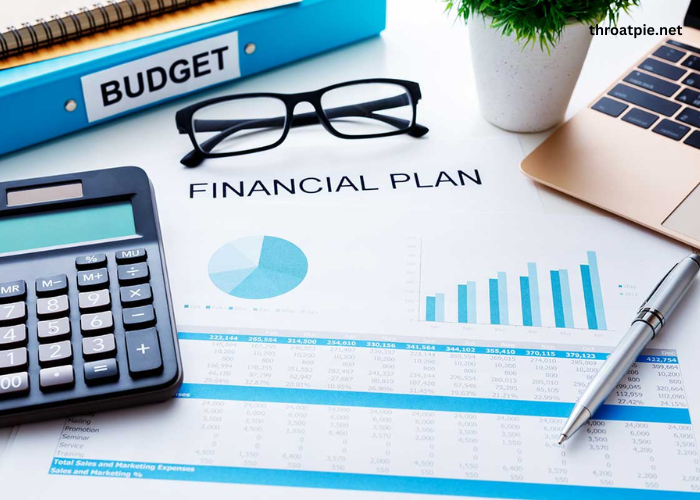In today’s fast-paced world, managing personal finances efficiently is essential to achieve long-term financial stability and freedom. A sustainable personal finance plan helps you to not only manage your expenses and save for future goals but also ensures that you can withstand financial challenges that may arise along the way. Whether you’re planning for retirement, buying a home, or simply striving for financial independence, here’s a guide to help you build a sustainable personal finance plan that works for you.
1. Assess Your Current Financial Situation
The first step to building a solid finance plan is understanding where you currently stand. Begin by evaluating your income, expenses, debts, and savings. Create a balance sheet that lists:
- Income: Monthly salary, side jobs, investments, or any other sources of income.
- Expenses: Track all of your fixed and variable expenses, such as rent, utilities, groceries, and discretionary spending.
- Debts: Include loans, credit card balances, student loans, and mortgages.
- Assets: List savings accounts, retirement funds, real estate, and any other valuable assets.
By understanding your financial landscape, you’ll identify areas where you can save or eliminate waste, and pinpoint any high-interest debt that needs to be tackled.
2. Set Clear Financial Goals
A crucial part of any finance plan is setting clear and achievable goals. These goals should be specific, measurable, attainable, relevant, and time-bound (SMART). Your financial goals can be categorized as:
- Short-term goals: These might include saving for a vacation, paying off a small debt, or building an emergency fund.
- Medium-term goals: These could involve saving for a down payment on a house or paying off student loans.
- Long-term goals: Retirement planning, building generational wealth, or reaching financial independence fall into this category.
Having defined goals helps you stay focused and motivated, guiding your decision-making throughout the journey.
3. Create a Realistic Budget
Creating a sustainable budget is key to maintaining a healthy financial life. Start by categorizing your monthly expenses and ensuring you allocate enough funds for savings and debt repayment. A good rule of thumb is the 50/30/20 budget:
- 50% on needs: This includes expenses that are essential for survival, like rent, utilities, and groceries.
- 30% on wants: Non-essentials, such as dining out, entertainment, and travel.
- 20% on savings and debt repayment: Allocate at least 20% of your income toward building an emergency fund, saving for your future, or paying off high-interest debts.
Use budgeting tools or apps to track your progress and make adjustments as needed. A flexible budget will help you stay on course while allowing room for life’s unexpected events.
4. Build an Emergency Fund
Life is unpredictable, and having an emergency fund is crucial to avoiding financial distress in times of unexpected events, such as job loss, medical emergencies, or car repairs. A general recommendation is to save three to six months’ worth of living expenses in an easily accessible account. This fund provides you with the financial cushion needed to navigate these challenges without going into debt.
5. Prioritize Debt Repayment
High-interest debt, such as credit card balances, can be a major barrier to achieving financial sustainability. Create a strategy to pay off your debts systematically. One effective method is the debt avalanche approach, where you prioritize paying off the debt with the highest interest rate first. Once that debt is paid off, move on to the next highest interest debt.
Alternatively, if you need quick wins to stay motivated, the debt snowball method focuses on paying off the smallest debt first, regardless of interest rate. Either method can help you get rid of debt and free up funds to allocate toward savings and investments.
6. Save for Retirement
Retirement might feel far away, but the earlier you start saving, the better. Utilize retirement accounts such as 401(k)s, IRAs, or other investment vehicles available in your country. Take advantage of employer matching contributions if offered, as this is essentially free money for your future.
Even if you start small, consistent contributions over time will grow significantly, thanks to the power of compound interest. The goal is to build enough wealth to support your lifestyle when you no longer wish to work full-time.
7. Invest for Growth
Investing is an essential component of long-term wealth-building. Once you have a solid emergency fund and are tackling high-interest debts, it’s time to explore investing options. Stock markets, mutual funds, real estate, and bonds are all common investment options. Consider speaking with a financial advisor to determine the best strategy for your risk tolerance and financial goals.
Start by investing regularly, even small amounts, to take advantage of dollar-cost averaging (DCA), which involves investing a fixed amount regularly, regardless of the market’s performance. This strategy helps you avoid trying to time the market and reduces the impact of short-term volatility.
8. Monitor and Adjust Your Plan
A financial plan is not a one-time effort; it’s an ongoing process. Life circumstances, income levels, and financial goals will change over time. To maintain sustainability, review your plan regularly and adjust it as necessary. Revisit your budget, track your progress toward your goals, and make changes if needed. Regular monitoring will also help you identify areas for improvement and keep you on the right path.
9. Educate Yourself Financially
Continuous learning about personal finance is essential for staying informed and making wise financial decisions. There are numerous resources available, from books to podcasts, blogs, and online courses, to help you deepen your understanding of topics like investing, taxes, and insurance.
The more you learn, the more empowered you’ll be to make informed decisions that align with your goals and values. Financial literacy is key to long-term success.
10. Stay Disciplined and Be Patient
Building a sustainable personal finance plan takes time, discipline, and patience. You may not see overnight results, but consistency is key. Stay disciplined, follow your plan, and remember that setbacks are a natural part of the journey. Celebrate small victories along the way and keep your eyes focused on the bigger picture.
By following these steps and committing to a sustainable approach to managing your finances, you can build a secure future. A solid financial plan isn’t just about wealth accumulation—it’s about creating a life where financial stress is minimized, and your goals and values are aligned with your actions.





